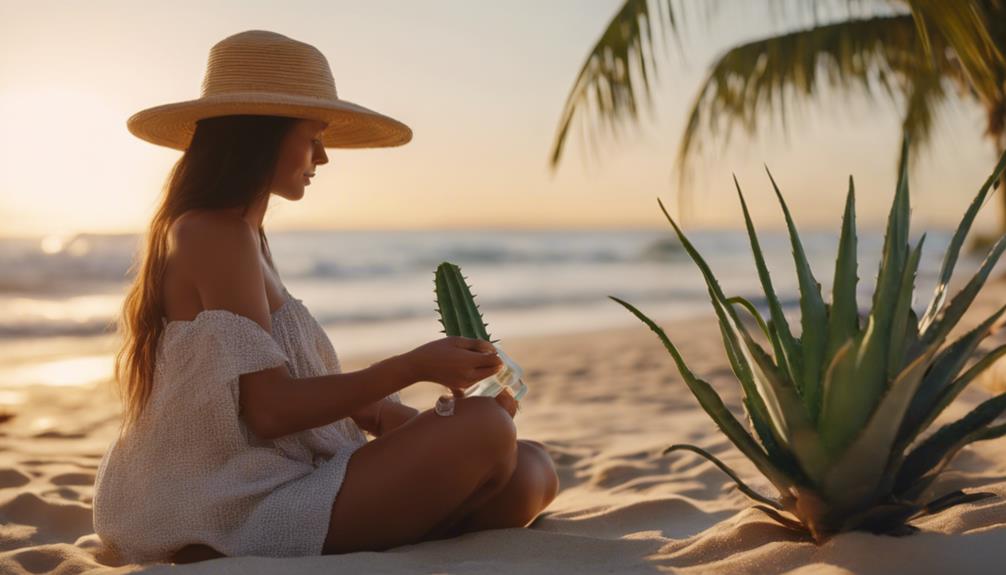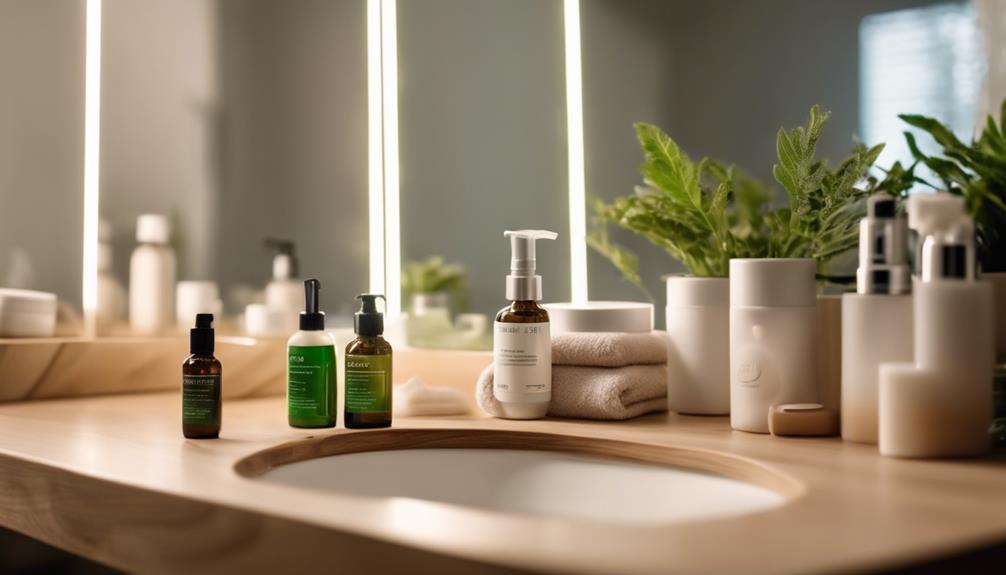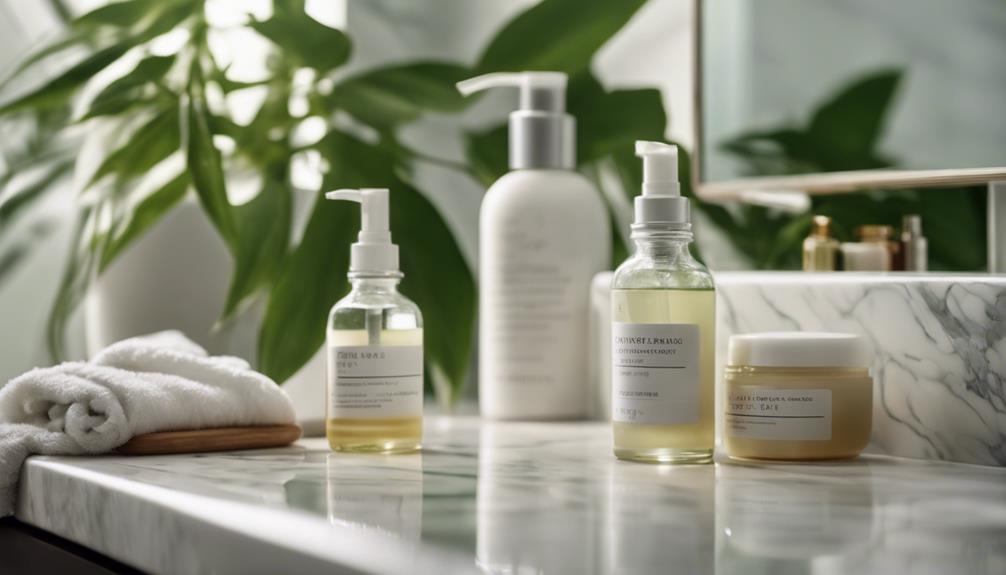Using a tanning bed can be enjoyable, but it’s important to be extremely cautious! First, understand your skin type – fair skin requires extra care, while olive skin is not immune. Begin with brief sessions, around 5-10 minutes, and avoid increasing the intensity too quickly. Remember to wear protective goggles to safeguard your eyes. It is crucial to moisturize before and after tanning, as well as staying hydrated by drinking enough water to keep your skin happy. Also, remember to clean the tanning bed thoroughly to prevent germs from interfering with your glow-up. Stay tuned for more tips on how to ensure a safe and fabulous tanning experience! If you are uncertain about safe tanning practices, don’t hesitate to seek advice from the salon staff. They are there to assist you in maximizing your tanning experience. Always pay attention to your skin – if it feels dry or irritated, it’s time to take a break and provide some extra care. By following these safe tanning practices, you can achieve a beautiful, radiant glow without any negative side effects. Consistency is key, so try to establish a tanning routine that works best for your skin and schedule. Always prioritize safety and listen to the perfect tanning bed tips provided by professionals to avoid overexposure and potential skin damage. With the right precautions and mindful care, you can enjoy a glowing, sun-kissed look all year round!
Key Takeaways
- Gradually increase tanning bed exposure time, starting with 5-10 minutes for fair skin to monitor reactions.
- Always wear snug-fitting goggles that provide 100% UV protection during tanning sessions.
- Choose bronzers specifically formulated for indoor tanning to enhance results and maintain hydration.
- Hydrate your skin by drinking at least eight glasses of water daily and moisturizing before and after tanning.
Skin Type and Sensitivity
Understanding your skin type and its sensitivity to UV rays is essential for safe tanning bed use.
If you've got fair skin, you'll want to be extra cautious, as you might end up looking like a lobster! Meanwhile, pale and light brown skin types should take it slow to avoid any damage.
Even if you have olive or bronze skin, don't think you're invincible; overexposure can still happen. Consulting a dermatologist is a smart move, too—they can offer tailored advice just for you.
Remember, exfoliating before tanning helps achieve that even glow you're after, and moisturizing the day before is key.
Safe Tanning Bed Practices

To guarantee a safe tanning experience, gradually increase your tanning bed exposure and always monitor your skin's reaction. Start with short sessions, maybe 5-10 minutes, and see how your skin feels afterward. You wouldn't dive straight into a pool without testing the water first, right?
Keep track of your tanning sessions with this handy table:
| Skin Type | Recommended Duration | Frequency |
|---|---|---|
| Fair Skin | 5-10 minutes | 1-2 times a week |
| Light Brown | 10-15 minutes | 2-3 times a week |
| Olive/Bronze | 15-20 minutes | 2-3 times a week |
| Dark Skin | 20-30 minutes | 2-3 times a week |
Essential Eye Protection

Protecting your eyes during tanning sessions is just as important as monitoring your skin's response to UV exposure. Imagine lying in a tanning bed, basking in the warmth, but what about those peepers of yours? You definitely don't want to risk damage from harmful UV rays!
So, grab a pair of snug-fitting goggles designed specifically for tanning. They block those rays effectively, making sure your eyes stay safe and sound. Plus, look for goggles that offer 100% UV protection—your eyes will thank you!
Don't forget to replace them annually to keep your protection exceptional. So, are you ready to enjoy your tanning sessions while keeping your eyes protected? Just think of it as giving your eyes a cozy sun vacation!
Choosing the Right Bronzer

Selecting the right bronzer can greatly enhance your tanning experience and help achieve a smooth, natural-looking glow. Imagine walking out of the tanning bed with a perfect tan that looks like it was kissed by the sun! To make that dream a reality, consider these tips:
Choose bronzers designed specifically for indoor tanning.
Look for moisturizing formulas to keep your skin supple and happy.
Opt for products with antioxidants for a nourishing boost during your session.
Apply evenly to avoid streaks, ensuring a flawless finish.
Importance of Skin Hydration

Staying hydrated is essential for maintaining healthy skin, especially before and after tanning sessions.
Think of your skin like a sponge; when it's dry, it can crack and get all flaky, which is definitely not what you want! Drinking enough water keeps your skin plump and helps it absorb that lovely tan more evenly.
You wouldn't want to paint a wall with a dry brush, right? So, sip on that water! Aim for at least eight glasses a day, and don't forget to moisturize, too.
Using a good moisturizer before hitting the tanning bed gives your skin a little extra love, making it look vibrant and ready to glow.
Post-Tanning Care Tips

After tanning, it's crucial to hydrate your skin with a good moisturizer to keep it from peeling and to extend the life of your tan.
Think of your skin as a sponge; if it dries out, it'll shrivel! So, pamper it a bit.
Here are some fun tips to help you shine:
- Apply a rich moisturizer within 24 hours to lock in that glow.
- Don't forget to reapply SPF lip balm to keep your lips soft and kissable.
- Drink plenty of water to keep your skin hydrated from the inside out—cheers to that!
Happy tanning!
Cleaning and Sanitizing Equipment

To keep your tanning experience safe and enjoyable, it's important to regularly clean and sanitize the tanning equipment you use.
Think of it like cleaning your room; a tidy space makes everything feel better! After each session, wipe down the tanning bed with an EPA-approved disinfectant, paying special attention to handles and cushions—those are the germ hotspots!
You wouldn't want to share your favorite snack with a messy plate, right? Plus, deep clean weekly to keep everything fresh.
Always remember, just like brushing your teeth, maintaining a clean tanning space keeps you safe from skin irritations and infections.
Frequently Asked Questions
Can I Tan if I Have a Sunburn?
You shouldn't tan if you've got a sunburn. Your skin needs time to heal, and tanning can worsen the burn, causing pain and long-term damage. Focus on soothing your skin before considering tanning again.
How Often Should I Exfoliate Before Tanning?
Research shows exfoliating 2-3 times a week can enhance tanning results. You should exfoliate the day before tanning to remove dead skin cells, ensuring an even tan and better absorption of bronzing lotions.
Are There Any Tanning Bed Alternatives?
If you're looking for tanning bed alternatives, consider sunless tanning products like lotions, sprays, or mousses. You can also explore spray tanning salons or natural methods, such as bronzers, for a sun-kissed glow without UV exposure.
What Are the Signs of Overexposure to UV Rays?
You'll notice signs of overexposure to UV rays like redness, swelling, blistering, and peeling skin. If you experience headaches, dizziness, or unusual fatigue, it's essential you seek shade and hydrate immediately.
Can I Use Self-Tanner After Tanning Bed Sessions?
Sure, self-tanner's safe after tanning bed sessions! Simply wait until your skin cools and calms. Applying it too soon may result in streaking, so patience pays off for a perfect, polished finish.
Conclusion
So, as you hop into that tanning bed, remember: you're not auditioning for a lobster role in a play!
Take care of your skin, know your type, and ease into that glow like it's a warm hug.
Use protective gear, choose the right bronzer, and don't forget to hydrate!
Your skin deserves the VIP treatment, not a sunburn encore.
With these tips, you can strut out looking fabulous without turning into a crispy critter.
Happy tanning!









